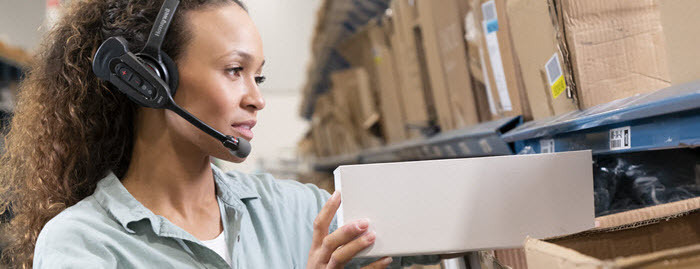Adjust carriers for shipments based on delivery conditions
09 Feb 2023
5 min read
During implementation, our consultants often get the question of whether 3PL Dynamics can handle customer demands for delivering the goods you ship from your warehouse. For example, think of specific carrier types or maximum heights that your customers use. In that case, you want your WMS to do the dirty work for you and these demands during your process. After all, you have invested significantly to automate these processes. So, do you face customer demands for your shipments? And do you want to register and process these in your WMS? Learn how to capture these demands in your system and how to apply them in your process with standard functionality in 3PL Dynamics.
Capture delivery demands
To be able to apply these customer demands in your process, you must define these in your system. On both the customer card and the addresses, you can capture demands in 3PL Dynamics via conditions. In these conditions, we distinguish the carrier types and maximum heights of a carrier. Furthermore, you can distinguish carriers that are taken directly from your stock, and carriers that are picked via order picking. In total, there are four different conditions available to capture these demands.

The result of capturing these conditions results in conditions that are automatically added to the shipment lines when created (manually, via EDI, or Excel Import).
Applying conditions in your order pick process
To streamline your order pick process, several allocation methods are available. For example, you can determine whether the requested articles must be collected via complete carriers, or you would need an order pick activity to do so. When order picking is applied, a specific strategy offers you the possibility to take the delivery demands into account when creating the order. That happens based on the conditions on the line.
Furthermore, 3PL Dynamics can separate a shipment into multiple order pick assignments, based on the requested carrier type and the maximum height. And, when captured in your master data, you can also do this based on the number of articles per layer. During the order picking process, you can then make the order picker pick his articles on the correct carrier type. In that way, can already apply conditions during your order pick process, and you prevent extra work right before shipment.
Carriers directly from your stock.
When the allocation confirms that the selected carriers can be collected directly from your stock, so without order pick activities, the carriers can be gathered regularly. When all carriers of the shipment are collected, a status change or scan function determines if the carriers meet the conditions on the lines. Are not all conditions met? Then 3PL Dynamics automatically creates a warehouse activity to adjust the carriers. Depending on what conditions are not met, a specific action code is applied. The name of these codes can be set up by the consultant. However, in general, this activity is separated into the following four warehouse activities.
- Re-stack: you must stack within to same carrier group to another carrier type. For example, Chep Block to Plastic Block. Tilting is not allowed.
- Tilt: you must stack within to same carrier group to another carrier type. For example, Chep Block to Plastic Block. Tilting is allowed.
- Stack off: you must lower the height of the carrier, as it is higher than maximally allowed. The carrier type remains unchanged.
- Switch: you must switch the goods to a different carrier type, that does not fall into the same carrier group. For example, Chep Block to Euro. When the maximum height is reached, this is directly applied too.
Warehouse activities linked to your shipments
When the warehouse activities are created, the collected carriers are deleted from the detail lines on the shipment. Though, these are still linked to the shipment. Therefore, the carriers are not available for other orders. The warehouse activities create new detail lines based on the new contents of the carrier, and possibly the new carrier numbers.
Important conditions:
Do you want to use this functionality in your process? Then you must beware of the following conditions.
- The master data of your customer articles must be correct. When you have wrongly captured the measurements of the units, no WMS can use this data for correct calculations.
- Once using the functionality, the warehouse activities must be executed. It is impossible to re-stack carriers physically, but not change the data administratively. When carriers do not meet the conditions, you cannot post the detail lines on the shipment.
- The place in your warehouse where you execute the warehouse activities must provide sufficient space and materials. Think for example of a label printer, pre-printed stickers, a wrapping machine, etc. It is advised to set up a specific part of your warehouse of expedition floor for this process.
More information?
Do you start working with delivery demands? Or do you want to learn more about how to apply this functionality in your current process? Mail to info@elevate-it.be; our consultants are happy to help.







